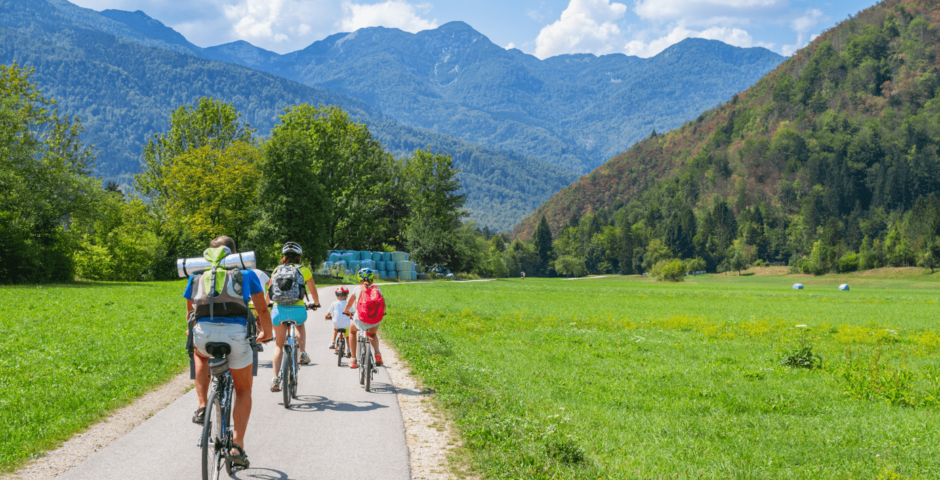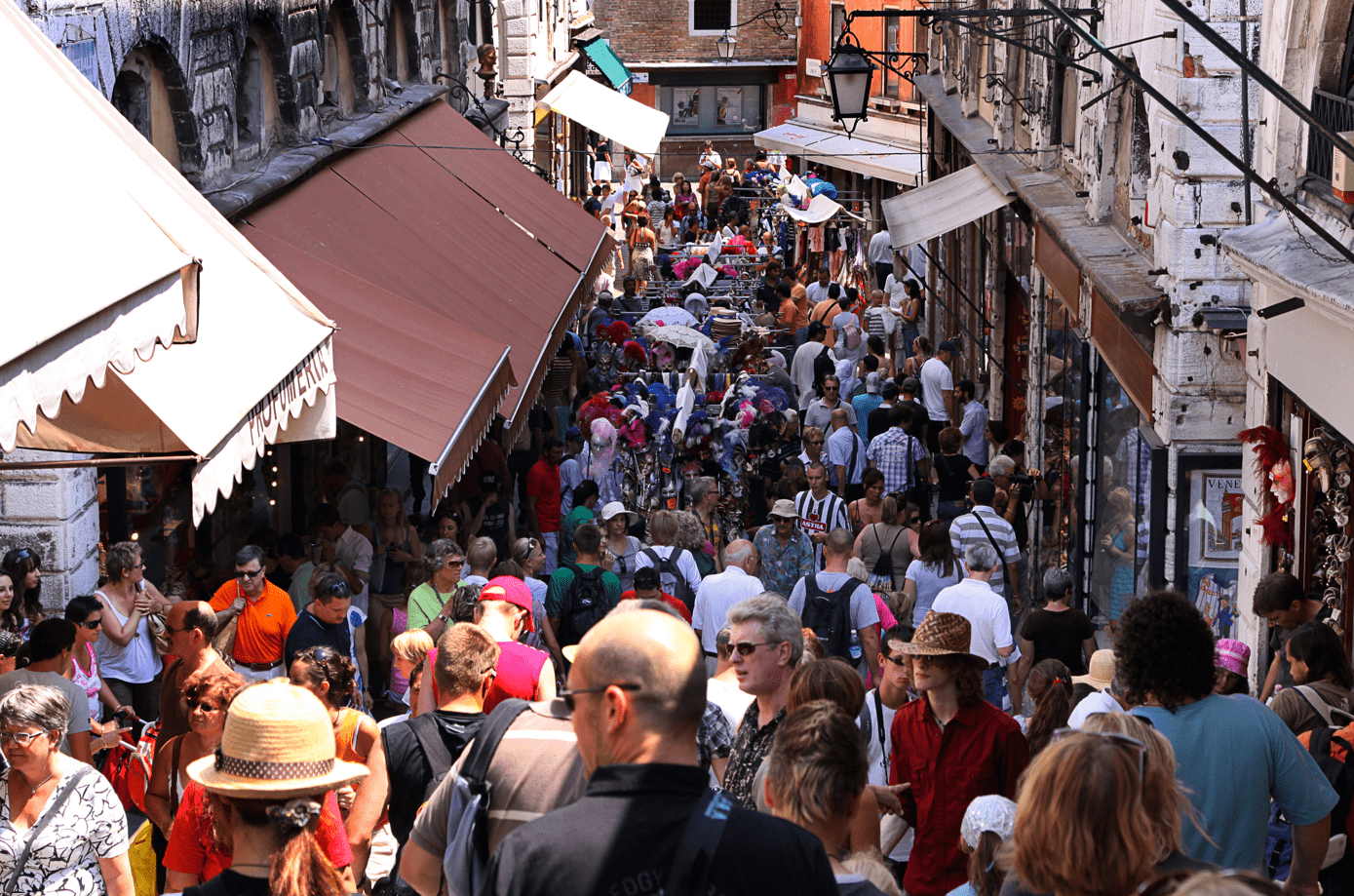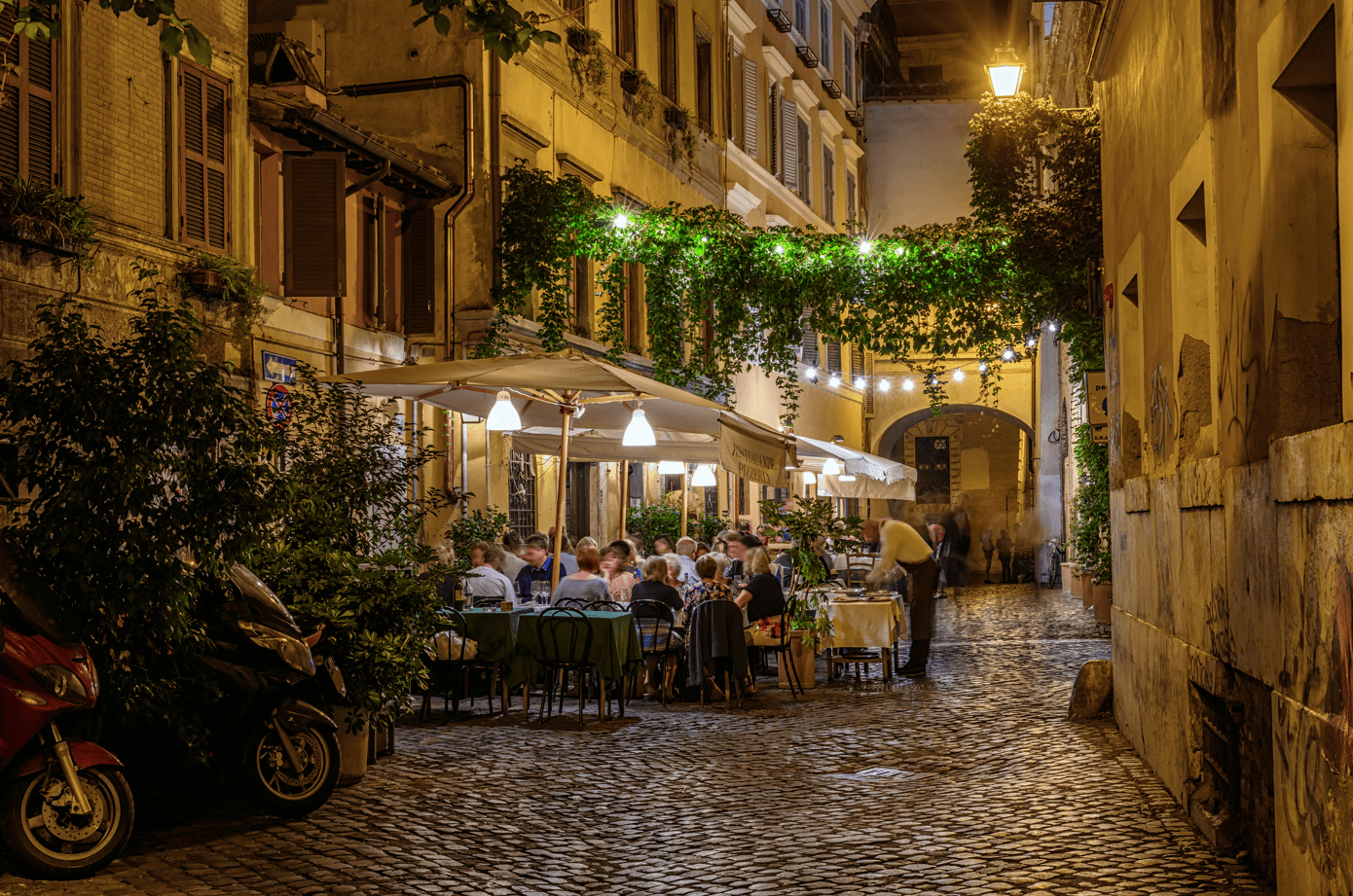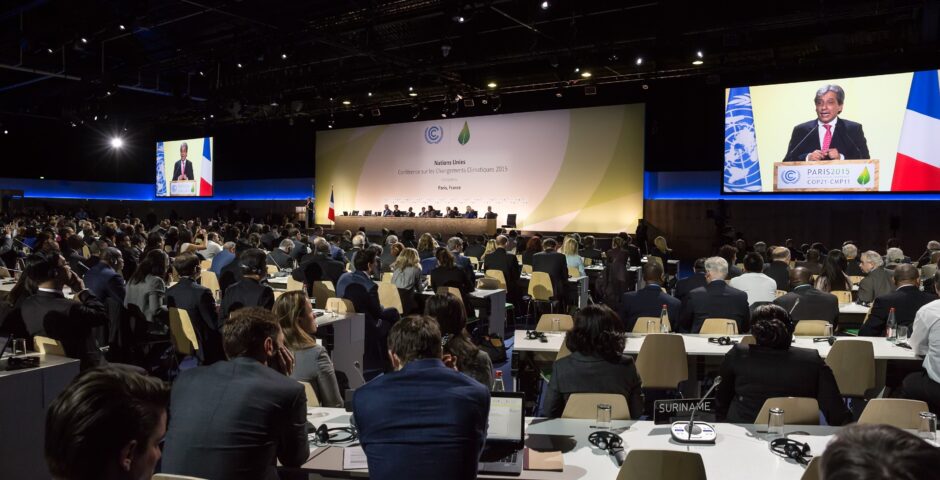Slovenia as an Example for Touristic Europe

Bringing mass tourism to a halt: How Slovenia is putting sustainable tourism on the map.
The small, central European country of Slovenia has been discovered by more and more tourists in recent years. And rightly so, because the little country has an awful lot to offer. From the lively and trendy capital of Ljubljana to the cozy coastal town of Piran, and from the Alpine region with meadows, lakes, and mountains in the north to the vast forests full of deer, foxes, and even bears in the south … Slovenia has something for everyone. Yet despite growing popularity among vacationers, the country manages to protect its green character exceptionally well. In fact, Slovenia was the first country in the world to be declared “a Green Destination of the World. Slovenia has put sustainable tourism on the map with legislation, labels, and programs. This has made it a good example for Europe and the rest of the world.
Tourism: a curse…
The falling price of airline tickets and accommodations and the simultaneously growing prosperity worldwide are allowing more and more people to travel. During and after the coronavirus pandemic we saw a (big) dip, but now we are already back to the old level. It is expected that the number of tourists will continue to rise in the coming years and may even triple compared to 2000 – especially as the middle class from India and China is growingand they are expected to be able and willing to travel more and more.
People are traveling more and further. That has advantages, but also disadvantages. Everyone knows that flying is harmful to the environment. In addition, tourism can lead to smaller-level pollution, damage to local nature, and the disruption of local communities. Moreover, in recent years there has been increasing attention to the effects of mass tourism. One can think of plenty of examples of places that were once very beautiful, cozy, and picturesque, but have now been “ruined” by mass tourism. Take Venice, for example. The board of the beautiful Italian gondola city announced in April 2022 that it was going to charge entrance fees to reduce visitor numbers to a maximum of 50,000 day visitors. Still a lot, but already a lot less than the 110,000 people (!) that used to be there on an average summer day in July.
Venice is overrun with tourists. Cruise ships and yachts pollute the water as well as the imposing view. The canals are a fun place to ‘queue’ in a gondola, and on the Ponte Di Rialto, you can take the same selfie with hundreds of others at the same time. However, the inhabitants of Venice are being driven further and further out of the (inner) city. Unesco even threatened in 2014 – because of the problems arising from mass tourism – to put the city on the List of World Heritage in Danger.

Mass tourism meets with resistance in Venice. Many residents feel that the city government is failing to protect the interests of the residents as well as the interests of the historic city and its heritage. When Venice could not be visited temporarily during the coronavirus pandemic, residents were able to get a taste of the peace that Venice once had. And although the inhabitants depend on tourism and they eventually looked forward to their return, the pandemic became a time to reflect and think about the future of tourism in the city.
Venice, by the way, is not the only city where mass tourism is encountering increasing resistance. Residents of cities like Barcelona, Dubrovnik, and – closer to home – Amsterdam also complain about nuisance from tourists, misbehavior on the streets, rising (housing) prices, so-called “TikTok queues,” Airbnb taking over the city, and enormous crowds everywhere.
… or a blessing?
Apart from all the (possible) problems that may arise, (growing) tourism also has a lot of advantages. Tourism can be very good for the local economy, for example, or for the development of a certain area. However, it is important that locals benefit from tourism, not just a handful of businessmen or foreign investors and companies. Tourism often creates thousands of additional jobs. Not only hotels and transportation companies but also museums, theme parks, restaurants, and cafes need additional manpower because of tourists.
In 2018, just before corona, the tourism industry provided the Netherlands with nearly 800,000 jobs. In fact, some locations, such as the Wadden Islands, depend almost entirely on tourism. Most islanders have a job in the hospitality industry, at an attraction or at a boat rental company, for example. What applies to the inhabitants of the Dutch Wadden Islands is true in some cases for entire countries. In those places, tourism is (almost) the largest source of income. For example, the paradisiacal Maldives depends on tourism for just under 40% of GDP, and the ABC island of Aruba depends on tourism for 28% of GDP. In Europe, for example, tourism is economically very important for large parts of Spain, Italy, and Greece.

Tourism has other benefits as well. Sometimes it ensures that the infrastructure in a country is improved. Governments want to make it attractive for tourists to visit the country. Safe roads and well-functioning, modern airports help in this regard. This ultimately benefits not only the tourists but also the local residents. Tourism can also ensure the development of (new) parks, museums, and attractions. Moreover, to meet the needs of visitors, an increase in tourists sometimes leads to the implementation and improvement of certain facilities that are also necessary for local residents, such as public transportation, waste management, public toilets, good water systems, health care, recreational facilities, and so on.
Tourism also has another – non-economic – function: namely, it can help a country strengthen or improve its image. This is currently happening a lot in Middle Eastern countries, where press trips and influencers are being used to improve the image of various countries and put the country on the map. The same applies, only to a different extent, to countries in the Balkans and Eastern Europe. Many people, because of the history surrounding the Iron Curtain and the Cold War, still think negatively about these regions as destinations.
Ideas about cities full of grey Soviet flats do not contribute to a romantic, cozy or summery image of a possible vacation country. Moreover, when people think of the Balkans, they quickly think of conflict and unsafety, because of the Yugoslavia Wars. Sustainable tourism is therefore a tool used by several countries in the region to improve this unjustified negative reputation (because, spoiler: the Balkans and Eastern Europe are beautiful and safe!). Slovenia leads the way in this, but the government of Montenegro is also working hard on this. Sustainable tourism is used as a characteristic and distinctive aspect of the country, in order to attract a new target group.
Finally, (growing) tourism can create pride among local residents, and culture and knowledge transfer among people visiting the country. In this way, tourism leads to greater international understanding and mutual respect.
Sustainable tourism as an alternative
In recent years there has been increasing awareness of both the positive and negative effects of tourism. We now know that tourism has not only benefits, but it is apparently also good for the local and sometimes even national economy and development. So is it possible to promote tourism without creating all the problems mentioned above? The answer to this question is “yes”. There is an alternative, namely sustainable tourism.
Sustainable tourism is defined by the United Nations World Tourism Organization (UNWTO) as “Tourism that takes full account of present and future economic, social and environmental impacts, considering the needs of visitors, industry, the environment and host communities.” In this regard, three issues are high on the agenda:
- Maintaining ecological processes and contributing to the preservation of natural heritage and biodiversity.
- Respect the socio-cultural authenticity of host communities, preserve their cultural heritage and traditional values, and contribute to intercultural respect and tolerance.
- Ensuring long-term viable economic activities. Distributing socio-economic benefits fairly, securing stable employment and social services/facilities to host communities, and contributing to poverty alleviation.
In addition to the points explained above, the idea is that sustainable tourism ensures a high level of satisfaction among tourists. Besides, sustainable tourism is different from ecotourism, even though it has similarities. Indeed, in ecotourism, vacationers travel to naturel reserves in a responsible manner, while the environment remains protected, and local flora and fauna are not harmed. There is often an educational component to the program, to allow the traveler to learn more about their potential impact on the environment and how to reduce it.
Yet sustainable tourism and ecotourism have also been criticized. Although there is a definition from the UNWTO, it is not widely accepted. Louche companies can organize “planet friendly” trips without too much effort, without actually being “eco” or sustainable. In addition, it is sometimes very difficult or even impossible to meet the criteria, making an eco trip suddenly look very much like a ‘normal’ trip. This while asking for more money. On top of that, the organizations offering these trips are often not local, which means that the local population in particular benefits less.
Sustainable tourism in Slovenia
In recent years, the number of tourists in Slovenia has grown significantly. Yet the country very deliberately has no room for mass tourism. In 2019, just before the coronavirus pandemic, 5.6 million travelers visited Slovenia, of which 1.4 million came from the home country. By comparison, in 2019, 5.2 million people visited amusement park the Efteling in the Netherlands. So the numbers are actually not that bad, even though they are great numbers for a country of two million people. Still, you will notice – if you visit the country – how peaceful, green and clean it is.
So while Slovenia does get tourists, it doesn’t feel like “too many”. As such, Slovenia manages to spread tourists well across the country, keeping the areas – city, forest, alpine, and countryside – livable, green and quiet. This is partly because the country has been committed to sustainable tourism for years. The main reason for this is that Slovenia wants to preserve its most beautiful spots as they are today so that future generations can also enjoy them. At the same time, the focus on sustainability strategically and marketing-wise ensures that Slovenia remains and becomes an attractive, green and healthy destination for tourists.
Slovenia has established a national certification program called SLOVENIA GREEN, which brings together all efforts around sustainable tourism. In this program, destinations (cities, villages, national parks, attractions, etc.), tourism service providers, and other stakeholders work together. The program was created primarily as a handle for destinations and businesses to integrate sustainable tourism into their operations. Furthermore, part of Slovenia’s sustainability plan includes bicycle routes, such as the Slovenia Green Gourmet Route. This route leads cyclists across the country past a variety of sustainable food providers.
When destinations meet the requirements, they can end up on the Green Scheme. It currently lists more than 130 destinations, accommodations, national parks, businesses, attractions, restaurants, and beaches. Tourists can see at a glance which destinations and businesses are doing well in the field of sustainable tourism. Moreover, these pioneers receive a special sustainability label (bronze/silver/gold/platinum/or specific to an accommodation/attraction/etc.).
As a vacationer, you quickly notice how much Slovenia is focused on sustainability. Downtown Ljubljana is car-free, but you can make free use of some sort of electric golf carts that drive you from place to place. For a real wildlife experience, you can spot bears in the southwestern part of the country. All the organizations that offer this are dedicated to protecting bears – that’s where the entrance fee goes. By the way, the bear population in this forest area is the largest in all of Europe! Moreover, the forests are protected as a whole, as are the mountains, caves, and lakes. The country is bursting with eco-lodges and vega(n) restaurants. The capital is also committed to achieving zero waste, and fifty percent of the city consists of green areas and parks. You can cycle well on the many bike paths, and should you be thirsty? Then the water from one of the dozens of free taps is of exceptionally good quality.
Slovenia as an example for Europe
With the number of tourists set to keep increasing in the coming years, it is good to think about how this can be organized. Slovenia has been one of the first countries to step forward and change tourism – in a positive way. While the country is committed to sustainability as well as livability for Slovenians, the country is becoming more and more popular among tourists and Slovenia is also winning one award after another. That the country is an example for Europe is therefore neither a surprise nor a point of discussion. It is only up to many other European countries to (finally) follow suit.
Loes ter Horst is pursuing a master’s degree in Middle East Studies at the University of Amsterdam. Last summer she obtained the MSc in Crisis and Security Management from Leiden University, having previously graduated BA in Liberal Arts and Sciences from Utrecht University.
Imagery: Shutterstock




